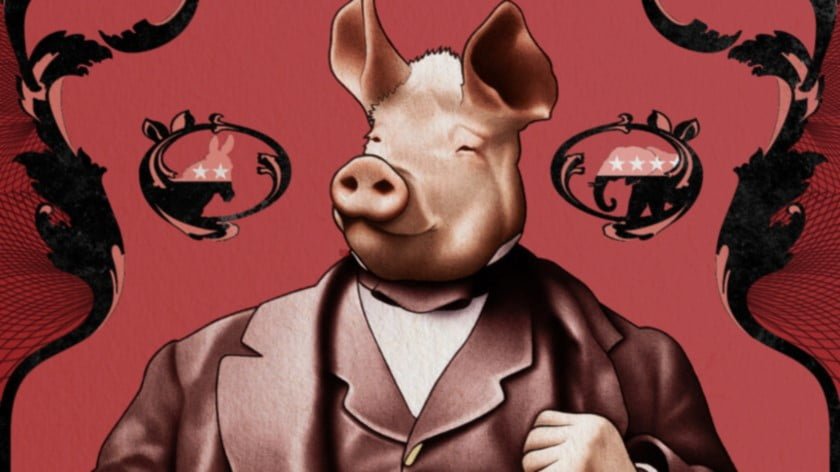De-Conflicting With the West: Will the Valdai Blueprint Work?
To decipher the true potential of President Putin’s recent Valdai speech – for de-conflicting with the West – we must turn to the 15th century.
To decipher the true potential of President Putin’s recentValdai speech – for de-conflicting with the West – we must turn, paradoxically, to the 15th century.
The 15th century ‘event’ was the ‘discovery’ of a text that erupted into Florence of the di Medicis, sending Europe into a vortex of excitement. It was an ensemble of texts called the Hermetica that were well known to exist: They had been venerated by writers, such as Clement of Alexandria (d. 220 CE) and Origen (d. 253), as an extraordinary source of inner knowing – long preceding that of Christianity.
There was just one problem: No one in Europe had read it.
Then an agent commissioned by Cosimo di Medici, to collect newly available Greek writings on his behalf, reached Florence in 1462 with a document from Macedonia that Cosimo instantaneously purchased from his scout.
It was the legendary venerated Hermetica that had arrived in Florence. It had been transcribed by Greek-speaking people, somewhere between 100–300 CE, but from much earlier Egyptian texts. The discovery of papyri of Hermetic texts in central Egypt in the 1940s has shown them to be adaptions of material deriving from the ‘Intelligence of Re’ – The One – the all-pervading divine Mind, and therefore reflecting an intellectual tradition and science that reaches very far back in time.
What has this to do with Putin’s Valdai speech? Well, quite a lot – both by way of analogy, and by way of a warning too. For then – the 15th century – it too was a time of dark foreboding, as the swirling force of voracious Protestant literalism was barrelling into traditional Christianity – which, until then, had struggled to retain its seat between a literal world and that of inner illumination. Wherever traditional Christianity sought to make its vessels, critical doubt would follow behind, destroying them.
Open warfare between the Christian sects seemed inevitable – with consequences catastrophic for the western word.
Historian Francis Yates has suggested that the Pope quietly encouraged the translation of these Hermetic texts. The Pope hoped their central notion – that the root of reality, inhered in a multiple dimensionality and in the de-literalisation effected by thinking through image – might enable a synthesis to European factions on the brink of war.
Giulio Camillo, one of the most famous thinkers of the sixteenth century, writing on what ‘image’ might mean, says that the Hermetica “takes the image and similitude for the same thing, and the whole for the divine grade”.
This type of symbolic, rather than the literal interpretation of Christianity, created immense excitement and hope, at the time. The latter spread across Europe, including to the Protestant England – to John Dee, the greatest philosopher of his time, and Queen Elizabeth I’s close adviser.
It seemed to offer escape from the darkening clouds of the Reformation and Counter-Reformation.
In any event, Yates insists on the massive influence of the Hermetica. Not only in Italy, but in Protestant England, the Hermetica had had a profound effect on the circle surrounding Queen Elizabeth I. Sir Philip Sydney, Sir Walter Raleigh, John Dunne, Christopher Marlowe, William Shakespeare, George Chapman and Francis Bacon were all well acquainted with the Hermetic texts.
The analogy to Valdai now should be becoming clear: The Valdai speech is centred around the vision of ‘a concert’ of polyvalent civilisational visions (as facets of civilisation, per se), and on a multiple dimensionality.
Similarly, in the Valdai paradigm, different civilisations may pursue distinct spiritual values with the ethics that inhere in them, underlying differentiated political and economic systems too.
But, in a terrible warning to us today – In 1614, a scholar called Isaac Casaubon published an ‘analysis’ of the Hermetica, which he asserted, but was nothing more than a poor concoction of Greek, Christian and Jewish philosophy, blended with a touch of astrology and magic.
It was what today we would call a psyops hatchet job, financed by James I with a particular motivation in mind. The ultra-orthodox James I of England (and James VI) of Scotland, was deeply at odds with the temper of Queen Elizabeth’s reign, and had employed (that is paid) Casaubon and others to discredit and purge the so-called ‘magically inclined’ Court of Elizabeth I.
Casaubon’s literary assassination was extraordinarily successful: With the encouragement of the Christian church, his damning criticism was simply taken for granted. For, in the psychic tensions of the times, the Christian church’s attempts to rationally untangle its knots of the literalised divinity, led to an absolute and unwavering rejection of the ‘other paradigm’; or to any imaginative Hermetic resolution to muscular literalism. That early Vatican receptiveness had evaporated.
Casaubon had dealt the ancient tradition a fatal blow from which it never fully recovered. In 1860, Jakob Burckhardt published ‘The Civilization of the Renaissance in Italy’, in which he argued that the Renaissance was just a secular society of gifted individuals which ‘revelled’ in pagan writings, art, and values, but which was wholly overtaken and eclipsed by the spirit of (Enlightenment) empirical methodology.
Again, we may observe the Valdai analogy unfolding: Is this ‘Enlightenment’ reaction not reflected in today’s discourse? ‘The Chinese economy is but a poor version of the western neo-liberal model that ‘plays’ with a Confucian and Taoist legacy’. And Russia’s Orthodox revival is no more than a power-play, concocted by an Orthodox Patriarch and President Putin. The reality – the zealots opposed to Eurasian polyvalency insist – is that everything China and Russia attempt is but a poor ‘take-off’ of the Anglo, liberal market model based on science and tech-managerialism.
No work has done more than Burckhardt’s distortions to sever western Europeans from the very sources of their own intellectual tradition. In Joseph Koerner’s The Reformation of the Image, the author suggests that ‘the rejection’ of European intellectual roots reflected a hatred based on an absolute insistence that there must be an unambiguous distinction between truth and falsehood, and a consequent inability to accept the implicit or metaphorical.
The deep insecurity of the times was demanding authenticity, literal truth and singleness of meaning.
For Protestantism, Hermeticism became plain devil worship; for Puritanism, it was devil worship and idolatry; for materialist, rational philosophers it was superstition; and for scientists it was regarded as an absurdity. As the European consciousness darkened, and as the age became overshadowed by witch hunts and allegations of heresy and devil-worship, the whole neo-Platonic and Hermetic movement foundered, amidst ‘clouds of demonic rumour’.
The Renaissance ‘magus’ turned into Faust. It disappeared from the intellectually respectable range of ideas and was pushed so deep into hell – that sensible men soon feared to be associated with it.
Neo-Platonism was belittled and disdained as some primitive dabbling in diabolical magic. The Hermetic texts were ‘exposed’ as forgeries, and with it, the substance of the pre-Socratic tradition simply evaporated from view, becoming no more than the stammering attempt to say what only Aristotle, at last, had been able to articulate with any fluency.
Pico della Mirandella, a celebrated Hermeticist, died from poison; Sir Walter Raleigh was imprisoned in the Tower of London; Doctor Dee was shunned and excluded from society, vilified and attacked by an angered mob; his great library ransacked.
Considered to be the greatest philosopher in England of his time, Dee died lonely, and destitute; and Giordano Bruno, a leading Italian Hermeticist, endured eight years of torture during which he refused to recant; before in 1600, being led out into the Piazza di Fiori (Square of Flowers) in Rome, ceremonially to be burnt alive.
What had so fascinated the early Renaissance mind was the potentiality for human co-creative participation in the unfolding of a truly societal consciousness. Thus, participation in Putin’s schema of civilisational states – achieved via a ‘reaching back’ to old values – essentially entails an act of mimesis.
Through the choice of which aspects of which ideas, images, patterns of thinking, models of behaviour, icons of human ascent to select, and in what manner to imitate them, the Valdai schema somehow echoes Renaissance values, and therefore offers the potential to re-connect to the shared ancient sources to our distinct civilisations.
According to neurologist, Iain McGilchrist, writing in his book, The Master and his Emissary, “mental representation – in other words, imagining – brings into play some of the same neurons that are involved in direct perception. It is clear from this that even when we so much as imagine doing something, never mind actually imitate it; it is, at some level which is far from negligible, as if we are actually doing it ourselves”.
“The overwhelming importance of mimesis suggests too that the behaviours we imitate: We may pass down: These are thought to be mechanisms whereby brain capacities and cognitive abilities acquired during a single human lifetime could be transmitted to the next generation. These epigenetic mechanisms do not seem so much to depend on alterations of the actual sequencing in the DNA within the genes, but on factors which influence what is expressed by that unchanged DNA – so that certain ways of thinking do, and will, shape the individual nervous system structurally – as well as functionally”.
Renaissance Neo-Platonists already implicitly understood these neurological concepts from the so-called ‘magical’ Hermetic and Hellenic tradition, which had been always integral to ancient philosophy. They even purposefully and imaginatively ‘inhabited’ the great persons of Antiquity. This literally was the source to the Renaissance outpouring of creative energy.
Petrarch (1304–1374 CE) wrote long letters to his ‘inner familiars’: Livy, Vergil, Seneca, Cicero and to Horace – all of whom of course were long since dead. Erasmus prayed to Socrates, also long since executed. Marcilio Ficino set up an academy in Florence that was modelled on the Athenian Academy, and in which was re-enacted Plato’s ‘Symposium’ on the anniversary day of Plato’s birthday. Philosophy then was a ‘way of living’ that relied heavily on empathic interaction with icons, both visible, and those no longer visible.
This experience of ‘imaginative inhabiting’ is however no longer an experience that is ‘ours’ today. In today’s universally adopted mechanical system of cause and effect, causes antedate their effects and, so to speak, push from behind.
The implication of such logic is that ultimately what happens to us is determined by prior events: we go where we are pushed: If someone does something unexplained, then there must be a direct cause – usually presumed to be of a utilitarian nature. And if events happen in the world, they are the direct result of simple cause. In this way, everything that occurs is defined by something past, something already ‘known’, in an empirical sense. Nothing can be truly new.
But, in adopting the Hermetic optic – by allowing ourselves to be pulled forward, as if magnetically, into inhabiting certain foundational values and narratives – we may free ourselves from historical weight. This was the creative aspect of Hermeticism which so excited its adherents. “If, when we so much as imagine doing something, never mind actually to imitate it, it is at some level, as if we actually becomeit – then we are ‘free’ to ‘let go’ of simple physical causality – stemming from past events that somehow inevitably determine ‘our present’.”
It is too, a different way of envisaging sovereignty. It encompasses within it, the idea that sovereignty is acquired, through acting and thinking sovereign. That sovereign power grows out from the confidence of a people having its own distinct and clear history, its intellectual legacy, and its own spiritual storehouse on which to draw, and by which to differentiate itself.
These are the hidden gems inside President Putin’s Valdai speech, which somehow compare to Giulio Camillo’s memory theatre – intended as a memory-imprint system enabling the world again to be seen as a unitive whole.







